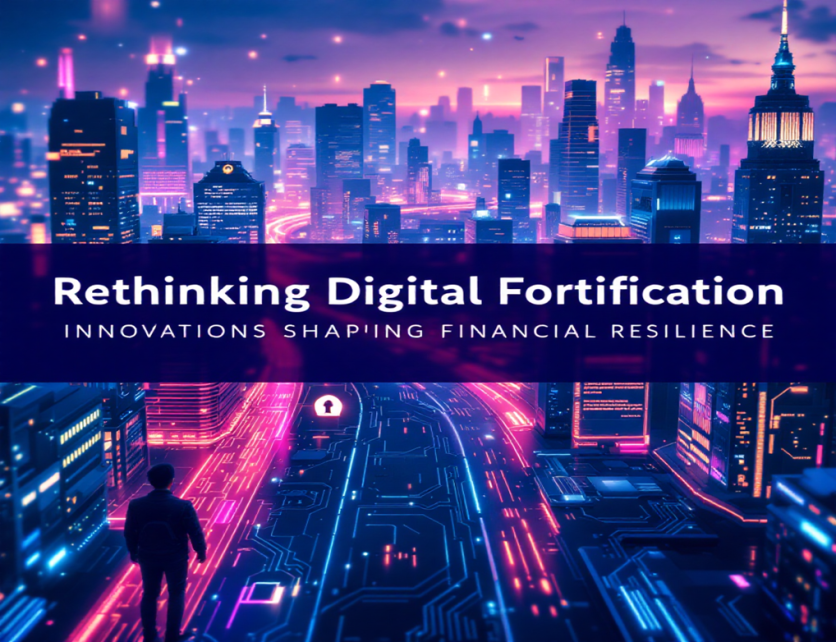
In this rapidly growing digital era, Digital transformation is no longer a choice but a necessity for financial institutions. As systems become increasingly interconnected, the vulnerabilities they harbor become more apparent. A notable incident—an IT outage resulting from a flawed software update—has recently underscored these weaknesses, sparking a renewed dialogue on operational resilience. Authored by Sheetal Anand Tigadikar, a seasoned academic and researcher, this article presents a forward-looking analysis of groundbreaking strategies that ensure financial stability despite technological upheavals.
The Perils of Automation without Guardrails
The outage exposed the financial sector's overdependence on automated deployments. While efficient, these systems rapidly spread flawed code without human oversight. Institutions lacking verification or staged rollouts suffered most. This underscores the need to balance automation with control mechanisms that identify issues before triggering widespread operational breakdowns.
The Missing Piece: Rigorous Pre-Deployment Testing
Pre-deployment testing is vital to prevent major failures, yet many financial institutions lack realistic sandbox environments. Without simulated testing, flawed security updates reached live systems. Those using detailed pre-deployment protocols that mimicked real-time operations saw far fewer issues, proving rigorous testing is essential, not optional.
Redefining Continuity: The Case for Failover Innovation
Disaster recovery plans are standard, but dedicated failover systems for security tools are rare. The incident revealed weak backup strategies across institutions. Robust failovers for financial security layers enable quicker recovery and reduced losses. Organizations with such setups restored services faster, proving that targeted resilience planning is crucial for continuity.
Controlled Rollouts: The Art of Strategic Deployment
Controlled, phased deployments significantly reduce system-wide failure risks. Releasing updates in non-critical zones allows monitoring before full rollout. Methods like canary releases and risk-based approval matrices ensure only stable updates reach core systems. As the outage demonstrated, this deliberate pace prioritizes safety over speed—a trade-off that safeguards continuity.
Hybrid Security Architectures: Balancing Redundancy with Flexibility
Relying solely on cloud or on-premise security is risky. The incident highlights the strength of hybrid models that spread workloads across platforms. Multi-vendor strategies and layered defenses—from endpoints to encryption—boost resilience. Institutions with air-gapped systems and fallback pathways maintained continuity, offering a model for future-proof financial infrastructures.
The New Playbook: Advanced Incident Response
Automated rollbacks and cross-functional crisis teams helped reduce incident impact. Institutions with predefined plans, simulation drills, and regulatory protocols managed disruptions better, minimizing downtime and ensuring compliance. This highlights the importance of well-practiced crisis preparedness in financial operations.
Vendor Vigilance: A Crucial Link in the Resilience Chain
Vendor risk management is often overlooked, yet it plays a pivotal role in digital resilience. Institutions with robust evaluation frameworks, detailed SLAs, and regular vendor assessments encounter fewer disruptions. The key lies in monitoring vendor performance, particularly patching efficiency and incident handling. These insights equip institutions to address service degradations before they escalate preemptively.
Proactive Monitoring: Detecting Before Disrupting
Machine learning-based monitoring outpaced traditional alerts by detecting issues preemptively. Tracking CPU trends, boot sequences, and transaction throughput enabled early warnings. Institutions using multi-layered monitoring across systems, applications, and workflows ensured quicker detection and response, securing real-time protection for critical financial operations.
Isolation by Design: Containing the Blast Radius
Using segmented environments for financial workloads, architectural isolation strengthens resilience by containing incidents. With independent authentication and workload separation, these designs prevent cascading failures. Integrating multiple security perimeters ensures that even in worst-case scenarios, only limited systems are impacted, reducing recovery time and losses.
Automation with Context: Precision Testing for Financial Integrity
Generic system testing falls short in safeguarding financial operations. Institutions that embedded financial process simulations—transaction flows, compliance reporting, and data validation—within their testing frameworks identified potential failures early. Automated tools that emulate regulatory conditions and verify data consistency preemptively neutralize risks that could lead to severe operational and reputational damage.
In conclusion, as Sheetal Anand Tigadikar emphasizes, resilience must be the foundation of digital transformation. Financial institutions that embrace risk-aware innovation—by implementing phased rollouts, adopting hybrid infrastructures, deploying intelligent monitoring, and maintaining rigorous vendor oversight—position themselves for greater adaptability. In an era of growing reliance on third-party technologies, the capability to anticipate and mitigate disruptions will be a key determinant of sustainable success in the evolving digital financial ecosystem.
ⓒ 2025 TECHTIMES.com All rights reserved. Do not reproduce without permission.





